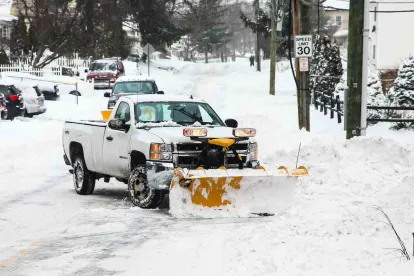Record-breaking winter weather in Texas has had devastating impacts across the state, and challenges still remain. Millions of homes and businesses were without power, water, internet and other services, leaving employees unable to work and businesses unable to operate. Access was impaired or prevented by ice and snow, along with governmental authorities encouraging or requiring closures. And new damage is occurring as rising temperatures turn frozen pipes into leaking ones. On top of all this, COVID-19 adds yet another dimension that may lengthen the repair and recovery process.
Fortunately, insurance can help businesses speed their recovery. Many insureds have questions such as: Are we covered for downtime? How about the lack of utility services? What if our facilities seem relatively unaffected, but we still lost sales because our customers or suppliers were impacted? Are governmental funds available to aid our recovery? These and other issues are crucial to accelerating and maximizing the recovery process. Bracewell’s Insurance Recovery team is here to help, starting with this summary of key issues.
Core Coverages
Most commercial property policies contain these core coverages:
Business Interruption
This covers the resulting economic impacts from physical loss or damage to your company’s property. Although roofs, pipes and other items may have been affected by these storms, physical destruction may not be required if your premises were rendered unusable. When triggered, coverage usually applies until the loss or damage is restored and business resumes. It can apply even after that for an extended period while business levels remain impacted.
Contingent Business Interruption
This covers damage to your suppliers or customers, even if your own facilities seem relatively unaffected. Occasionally, coverage is tied to a nearby property, even if there is no direct business relationship.
Service Interruption
This one is key for these kinds of events because it covers losses from the disruption of power, water, steam and other utilities, including internet connectivity. Coverage may be different depending on where the damage occurs, such as lines directly feeding your property or those at a distance.
Ingress/Egress
This is another key coverage due to roads covered in ice and snow that were impassable. It provides coverage for lack of physical access to your facilities. Some policies are written in terms of access being “prohibited,” while others focus on “impaired,” but courts have taken different views on this that must be considered as part of the coverage assessment.
Civil Authority
Curfews and other orders may trigger civil authority coverage where governmental agencies determine access rights. Aside from focusing on the policy language, courts also closely examine the governmental orders if they are in writing, though sometimes they are done using roadblocks and other means to curtail access, which should be documented.
Extra Expense
Finally, storms are expensive. Additional costs are routinely incurred to provide food, water and shelter for employees. Other expenses can include items such as overtime rates for cleanup and repairs, as well as extra security and expedited shipping.
Aside from considering these core coverages, here are key steps to take so your company can utilize its insurance assets to maximize the prospects for a successful recovery.
1. Protect People and Property
Helping and protecting your team is the first priority. Protecting property is next, and any emergency measures that are deployed should be documented.
2. Gather All Insurance Policies
Businesses must gather and carefully review all potentially applicable insurance policies. Property insurance is the most obvious source of coverage, and these policies commonly have a property damage trigger. That said, do not overlook other policies, such as auto or pollution coverage. Besides your company’s own policies, also look for coverage from other sources, such as counter-parties.
3. Assess All Potential Coverages
What coverages apply? What are the limits, deductibles and waiting periods? What conditions apply? If a loss triggers multiple coverages, does the policy allow stacking? These and other questions must be answered before you assert coverage positions. The policy is the starting point, but it is also crucial to know how courts interpret that language.
4. Notify Any Potential Insurers
Even if you have not yet identified all of your losses, notify any insurance company you might seek coverage from. Do not assume there is no coverage – be sure about it. And a notice just tells your insurance company that you might have a claim. It does not need to be particularly detailed at first, so there is no reason to delay. The policies will tell you what is required – just follow the instructions, and remember they vary in terms of what is needed, along with how and when it is to be communicated. Some insurance carriers require an email, while others use a web portal. Certain coverages, such as pollution, have very short timelines, sometimes only days.
5. Document and Mitigate Losses
Carefully documenting losses, especially before you undertake major restoration efforts, is important. Take notes. And pictures. If you’re using a phone, transfer the pictures to a more secure device. Create a record of actions taken and why. Track expenses for professional fees, mitigation and clean-up costs, using separate accounts. Save receipts.
You must make reasonable efforts to protect property from further losses, including mitigating additional damage. Because such mitigation is required, mitigation expenses are usually covered, and as long as your efforts are reasonable, carriers are usually reluctant to second-guess an insured.
6. Consider Financial Impacts
Did revenues drop? Did expenses go up? Were sales lost? Business interruption and related coverages reimburse insureds for financial impacts like these.
7. Engage Experts
Insurance carriers use teams to deal with claims, usually a mix of adjusters, coverage lawyers, accountants and engineers. Insureds should have that same team so they match up with the carrier, especially when at least some of these fees, such as those of accountants, are typically covered.
Having experienced coverage counsel that represents policyholders rather than carriers can guide you through the process, and also help protect communications as privileged. Coverage counsel can assume a prominent role, or work in the background, as needed. Insurers typically do the same. Cooperate with the insurer’s team, but don’t forget that they work for the insurer, not you. If you need advocates, don’t borrow the insurer’s. Hire your own.
8. Follow the Policy to Preserve the Claim
Policies sometimes require the insured to submit a proof of loss or take other actions within a set period of time. Insurers are usually amenable to modifying these if requested, but make sure that any agreements are properly memorialized in writing.
9. Control Your Claim
It is your claim. Try to avoid having the insurance company categorize or characterize it before you have had an opportunity to do that yourself. If that happens anyway, then remember that insurance claims are an iterative process and you can make any necessary corrections.
10. Communicate
Keep an open dialogue with your team and the carrier’s representatives. Stay professional and civil. Ask for, and provide, clarifications when needed.
11. Look for Value
Some policies provide replacement cost coverage, which often results in a better recovery for the insured, even if the property being replaced was old or in poor condition. Speaking of upgrades, look for building code upgrade coverage, which often applies as building standards are held to higher scrutiny following catastrophic weather activities, including winter storms.
12. Relationships Have Value
Your relationships matter. Your insurance broker’s team can also help. Even the relationships between coverage counsel or the accounting specialists and their counterparts on the insurer’s side can make a difference. These are important, and should be drawn upon as needed.
13. Government Funds Might Be Available for Non-Profits Providing Essential Services
The Federal Emergency Management Agency (FEMA) and other government-based programs are potentially available for non-profit organizations impacted by the winter storms that provide essential services, such as healthcare providers, educational institutions, emergency services, utilities, libraries, museums, zoos, community centers, airports and other services that, in their absence, the government would be expected to provide. The process can be daunting, and strict time limits apply, though such limits are usually extended. A successful applicant can reasonably expect FEMA to reimburse most of the eligible costs for emergency protective measures and permanent restoration costs. FEMA does not, however, pay business interruption losses, and aid recipients must reimburse FEMA for any benefits duplicated by insurance. Knowing the Stafford Act and its regulations is key to obtaining and maintaining a FEMA recovery.
14. Seek Resolution – It Will Well Position You Whether Your Claim Settles or Not
Claims that are well thought out and well documented usually yield better outcomes than ones that are not. Ask for advances from the insurer as losses are submitted. After doing that, work towards resolving the claim. If the claim is promptly paid, then you are on your way to recovery. If not, and the claim has substantial evidence supporting its merit, then you may be well positioned to pursue a bad faith claim if the insurer acted unreasonably.





 />i
/>i
